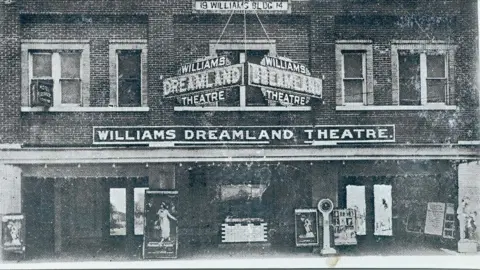The city of Tulsa, Oklahoma is poised to allocate a remarkable $105 million reparations package aimed at addressing the long-standing damages inflicted upon its Black community by the notorious Tulsa Race Massacre of 1921. This event, recognized as one of the most severe acts of racial violence in United States history, resulted in profound loss and suffering for the community, the effects of which have persisted for over a century.
Monroe Nichols, who is notable for being Tulsa’s first Black mayor, unveiled this comprehensive plan during the city’s inaugural official observance of Tulsa Race Massacre Observance Day. The strategy focuses primarily on community redevelopment initiatives rather than direct monetary compensation to descendants of the massacre victims or the surviving victims themselves. This approach reflects a broader effort to revitalize the community in the aftermath of historical injustices, embracing an era of reconstruction.
Among the details of the reparations plan, it has been earmarked that $24 million will be specifically allocated for a housing fund, while a substantial $60 million will be directed towards a cultural preservation fund. The latter fund is intended to tackle the blight that persists in the Greenwood District, which once flourished as a vibrant hub for Black prosperity, often referred to as “Black Wall Street.” The funds will be managed by the newly established Greenwood Trust, which aims to secure or commit these assets by June 1 to help restore the community’s legacy.
Nichols articulated a powerful message during the announcement, stating, “The Tulsa Race Massacre has been a stain on our city’s history… hidden from history books.” He expressed that the aftermath of this tragic event has been exacerbated by the economic deprivation that followed, notably through city planning decisions such as the construction of highways that hindered economic progress within the Black community. Furthermore, systemic issues like redlining—where Black residents were systematically denied loans—further depressed economic opportunities.
This reparations package is notable not only for its size and depth but also because it stands as the first significant plan to address the ramifications of a specific racially charged attack. While other cities, such as Evanston, Illinois, have initiated reparations programs, Tulsa’s proposed plan marks a pivotal moment in reparative justice, especially considering the current political landscape where diversity and equity initiatives may face scrutiny or rollback, as seen with previous administrations.
Nichols emphasized the importance of this initiative for healing historical wounds, stating, “Now it’s time to take the next big steps to restore.” He noted that the road to recovery requires investment in the economic vitality of the community that was robbed of its potential and future due to the devastation of the massacre.
As history often shows, the story of the Tulsa Race Massacre was not widely known or recognized for decades, a situation that began to change in 2020 when it received newfound attention. The tragic events surrounding the massacre saw over 1,000 homes and businesses destroyed within a mere day, and an estimated 300 Black individuals lost their lives. As the remembrances of that dark chapter in American history become more prevalent, this reparations initiative aims to manifest a more equitable and inclusive future for Tulsa’s residents.
The details surrounding the reparations plan highlight a gradual shift toward acknowledging and addressing the scars of racism and systemic inequities that have plagued American society. While the fight for reparations continues to be contentious across the nation, including challenges faced in various states like Maryland, Oklahoma’s commitment may inspire further action and discussions on reparations as a means to heal historical grievances.
In conclusion, the reparations package reflects a significant step toward redressing past injustices, fostering a narrative of healing and restoration, which has been woefully absent in the historical context of the Tulsa Race Massacre. It represents both recognition of the past and a commitment to building a better future for generations to come. As the Greenwood Trust prepares to manage the financial allocations, the hope is that these investments will lead to sustainable growth and renewal of Tulsa’s once-thriving Black community.



